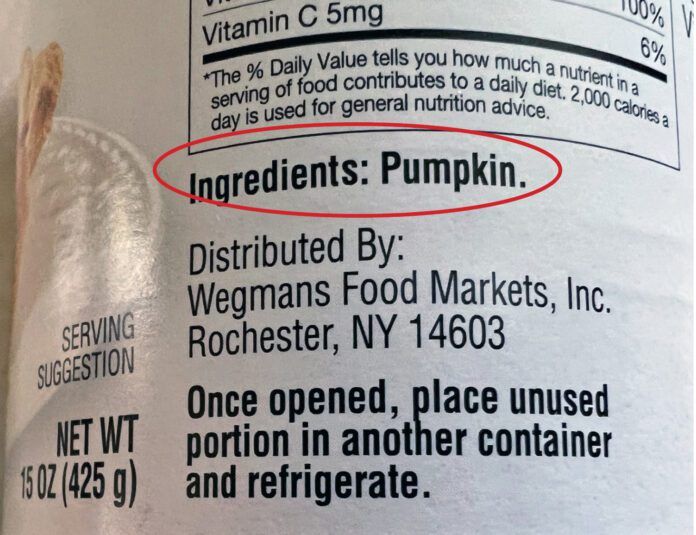Pumpkin is good for dogs, and it often helps dogs with diarrhea or, ironically, constipation. Despite the lack of scientific studies explaining how pumpkin works in dogs and what the dose of pumpkin to give a dog, a multitude of anecdotal reports support the benefits of pumpkin in dogs.
Note: Pumpkin purée, packed pumpkin, and canned pumpkin are the same. They consist of 100% pumpkin that has been cooked and is ready to eat. The thing you want to avoid is pumpkin pie filling, which is loaded with sugar and calories. Check the labels carefully! You just want 100% pumpkin.
Pumpkin Fiber
Although nutritionists agree that dogs don’t need fiber in their diets, fiber is often recommended for dogs with colitis (large-bowel diarrhea), constipation, and anal glands problems. Because pumpkin has fiber, with negligible calories, pumpkin may help with these conditions. The soluble fiber in pumpkin feeds the natural healthy gut bacteria in your dog, according to Dr. Lisa Freeman, in an article in Tufts Your Dog, a sister publication to The Whole Dog Journal.
Pumpkin is a dilute fiber supplement with a high water content. As such, dogs who require a lot of fiber to correct their issue might do better with psyllium powder, a more concentrated fiber supplement, but it must be unflavored with no added sweeteners. One cup of pumpkin has about 7 grams of dietary fiber. One cup of psyllium contains closer to 50 grams of dietary fiber. The use of psyllium powder should be discussed with your own veterinarian.
Pumpkin for Weight Loss
Pumpkin also can help dogs on weight-loss programs. Adding pumpkin bulks up the meals up a bit, helping the calorie-restricted dog feel fuller. It also may help the pet owner stick to the diet plan better too, as meals look a little bigger, making you feel a little less bad about your “hungry” dog on a diet. Pumpkin has approximately 5 calories per tablespoon.
How Much to Feed
With no scientifically based studies on how much pumpkin to feed your dog, a starting place is a half to a full teaspoon for a small dog (20 lbs and under), a tablespoon for a medium dog (between 21 and 35 lbs), and 2 tablespoons for a large dog over 35 lbs. However, finding exactly the right amount of pumpkin that works for your dog requires time, patience, and trial and error. Too much pumpkin for a dog with diarrhea might act like a laxative and make matters worse. Too little pumpkin for a dog who struggles with constipation or anal gland issues won’t help.







I tried pumpkin (the only pumpkin kind), and it didn’t help my older dog.
IMO, when dog (or cat or horse) have some kind of digestive issues, or have stopped eating… the best thing to do is to feed them GastroElm.
It’s from GastroElm.com
And it’s been very very helpful for my dog and a friend’s dog, and a neighbor’s dog, and I told the Facebook group I’m on for Negaesophagus about and people are liking it there too
Try it and then tell others because it’s so good and no I am not being paid to talk it up.
Look up their website and read what the four digestive herbs do that are the only thing in it.
Ingredients are: Slippery Elm, Milk Thistle, Dsndrlion Root and Marshmallow Root. They are in a powder form that you add water to which becomes a gel but you can add more water. I tried it and it doesn’t taste bad.. it has no taste.
Thanks WDJ for being a good publication!! I recommend you all the time!